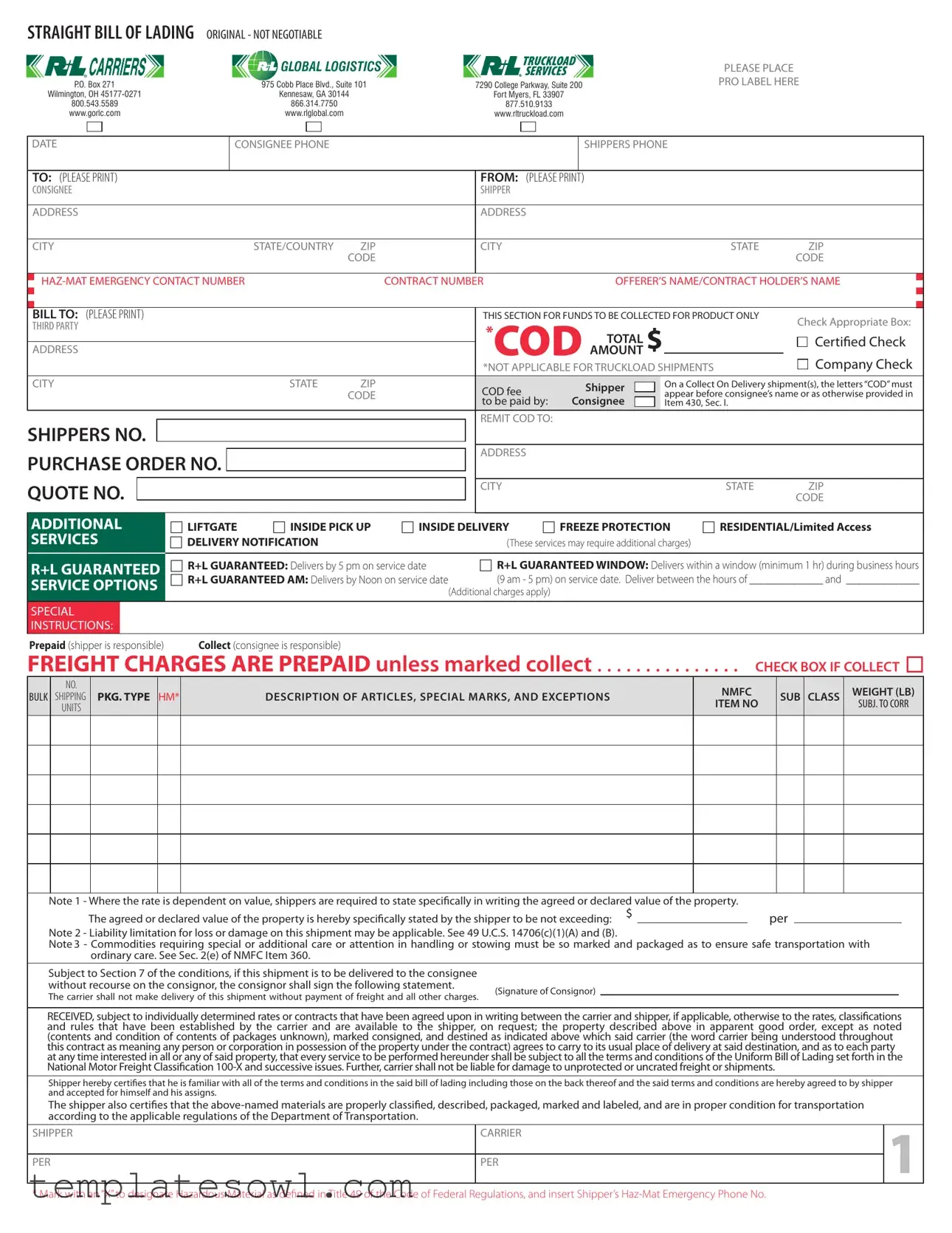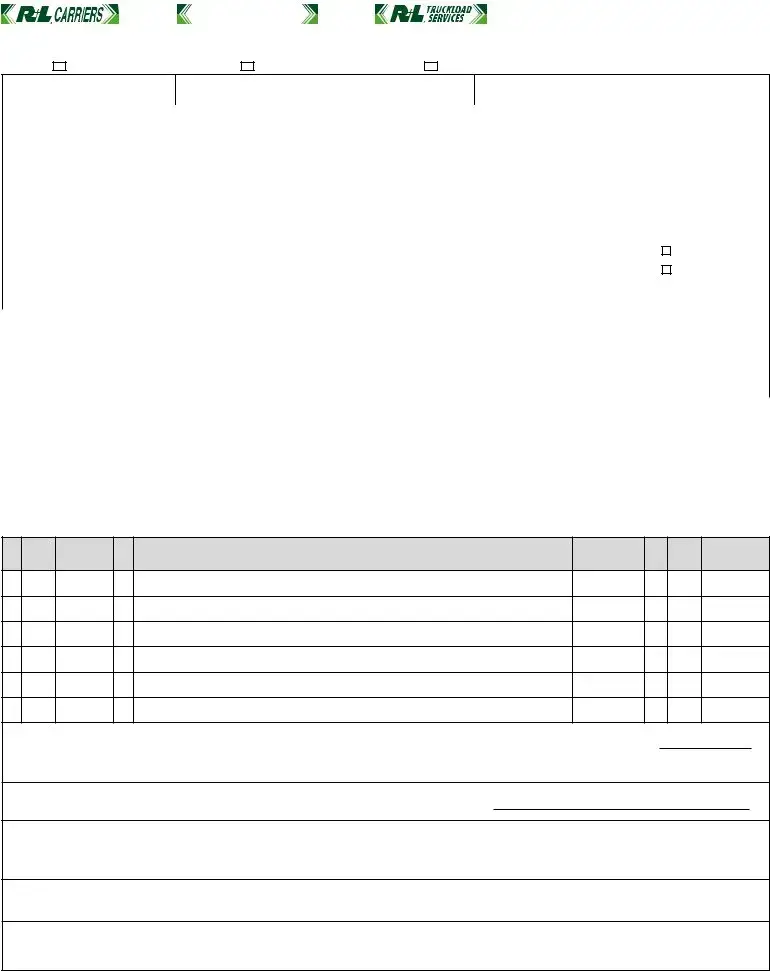What is the Rl Logistics Carriers form used for?
The Rl Logistics Carriers form is primarily used as a shipping document when transporting goods. It serves as a Straight Bill of Lading, which acts as a receipt for the goods and outlines the terms of transportation between the shipper and the carrier. The form provides important details, such as the names and addresses of both the shipper and consignee, descriptions of the goods, and any special handling instructions or service options required for the shipment.
What information do I need to fill out on the form?
You will need to provide several key pieces of information on the Rl Logistics Carriers form. This includes the date of shipment, the consignee's name and contact information, the shipper's name and contact information, and the addresses of both parties. Additionally, details regarding the hazardous materials, if any, should be provided. You will also need to specify the shipping services required, such as liftgate service or residential delivery, as well as the payment details for freight charges.
What does "COD" mean on the form?
Are there additional charges for using certain services on the form?
Yes, some services may incur additional charges. For example, services such as liftgate assistance, inside pickup and delivery, freeze protection, and delivery notifications often have corresponding fees. Be sure to check the boxes for any additional services required and be prepared for these extra costs when finalizing your shipment.
What are the limitations on liability regarding my shipment?
There are limitations on liability for loss or damage to your shipment as outlined in the bill of lading. Depending on the declared value stated on the form, specific regulations apply. It is important to thoroughly read the terms and conditions associated with the Rl Logistics Carriers form. If applicable, shippers may have specific protections and requirements under the Uniform Bill of Lading and the National Motor Freight Classification rules.
Do I need to sign the form?
A signature is required on the Rl Logistics Carriers form. The shipper must sign to acknowledge understanding and acceptance of the terms and conditions outlined in the document. This includes certifying that the materials being transported are properly labeled and compliant with all relevant regulations. Without a signature, the shipment may not be processed.


